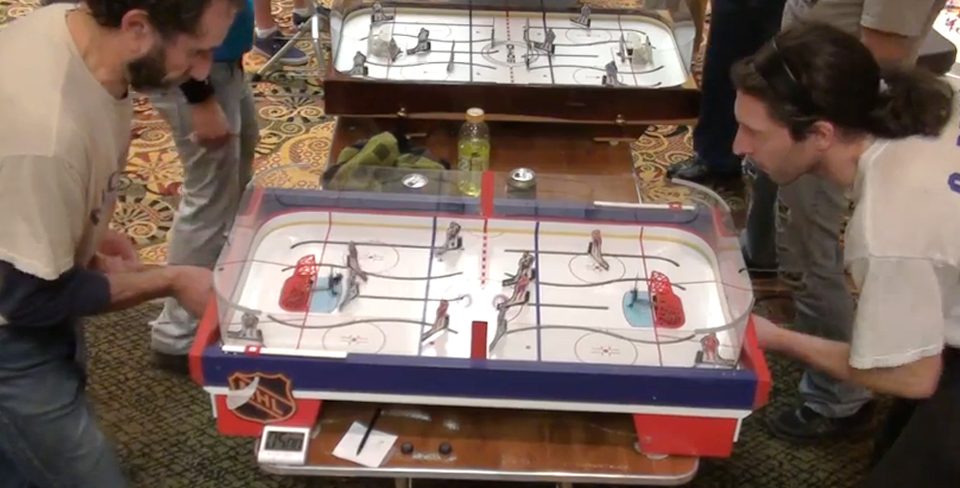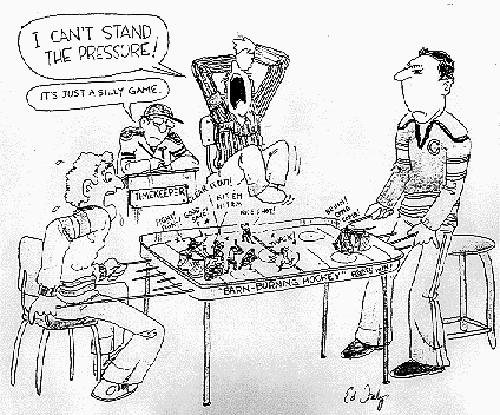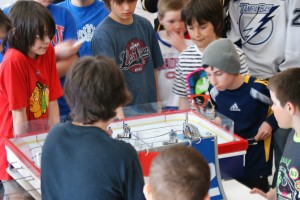Chess at 700 Miles Per Hour
Table hockey is the world’s fastest sport. Football is a game of inches, and seconds. Table hockey is a game of millimeters, and hundredths of a second.
When played at the highest levels, table hockey embodies rhythm, timing, speed, quickness, hand-eye coordination, concentration, competition, sportsmanship, pressure, skill, luck, and poetry-in-motion.
Table hockey resembles ice hockey much more, for example, than table tennis resembles tennis. Table hockey captures all the key features of ice hockey: movement and positioning of the players, face-offs, passing, fast breaks, shooting, checking, great scoring plays, clutch goaltending, and the drama of sudden-death overtime. But it is much more concentrated.
A Sport for Kids — of All Ages
You control all six players on your team: you are your forwards, your defense, and your goaltender too. Above all, you are also their coach, and so you must remain aware of strategy and tactics, even while immersed in the play. A five -minute, stop-time game of table hockey is equivalent to a one-hour ice hockey game. So be prepared to experience one hour’s worth of sport in five minutes. It is very intense!
Look at the kids in this photo, taken during the final series of a school tournament in Saint Sophie, Quebec. This is a picture of total concentration: No ADHD among table hockey players! They are having fun, while developing important skills that will serve them well, on and also off the table.
The table hockey “rink” is about 4 feet long, and a fast shot travels around 20 feet per second. So you have about one -tenth of a second to react to a shot-on-goal taken from your blue line. If that were the reaction time for the same shot on an ice hockey rink, the puck would be traveling at 1,000 feet per second, or about 700 miles per hour! Since the fastest shots in ice hockey are about 100 miles per hour, table hockey is actually seven times faster, taking scale into account.

Lou “The Legend” Marinoff makes a save against Carlo “The King” Bossio, in a semi-final match in Detroit.
The top pros, however, do see most of these shots, and are even able to defend against them. The net is about four inches wide, the goalie about one inch wide. So the goalie needs to travel about three inches to get from goalpost to goalpost. You control the goalie with a flick of your wrist, which causes your fingertips to traverse an arc of about three inches in less than a tenth of a second. So if you can see the puck, you can stop it.
Tennis has been called “chess at 100 miles per hour.” Table hockey is chess at 700 miles per hour. To find out how the game and sport evolved, read on …





